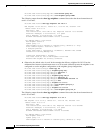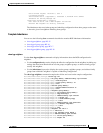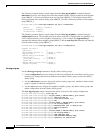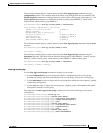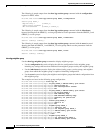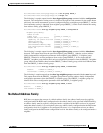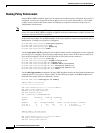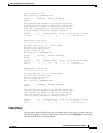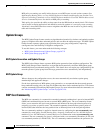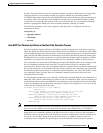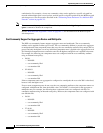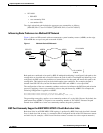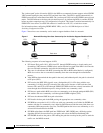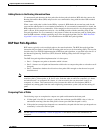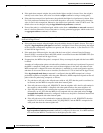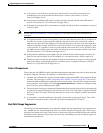
Implementing BGP on Cisco IOS XR Software
Information About Implementing BGP on Cisco IOS XR Software
RC-22
Cisco IOS XR Routing Configuration Guide
OL-14356-01
BGP policy accounting uses traffic indices that are set on BGP routes to track various counters. See
Implementing Routing Policy on Cisco IOS XR Software for details on table policy use. See the Cisco
Express Forwarding Commands on Cisco IOS XR Software module in Cisco IOS XR IP Addresses and
Services Command Reference for details on BGP policy accounting.
Table policy also provides the ability to drop routes from the RIB based on match criteria. This feature
can be useful in certain applications and should be used with caution as it can easily create a routing
‘black hole’ where BGP advertises routes to neighbors that BGP does not install in its global routing
table and forwarding table.
Update Groups
The BGP Update Groups feature contains an algorithm that dynamically calculates and optimizes update
groups of neighbors that share outbound policies and can share the update messages. The BGP Update
Groups feature separates update group replication from peer group configuration, improving
convergence time and flexibility of neighbor configuration.
To use this feature, you must understand the following concepts:
• BGP Update Generation and Update Groups, page RC-22
• BGP Update Group, page RC-22
BGP Update Generation and Update Groups
The BGP Update Groups feature separates BGP update generation from neighbor configuration. The
BGP Update Groups feature introduces an algorithm that dynamically calculates BGP update group
membership based on outbound routing policies. This feature does not require any configuration by the
network operator. Update group-based message generation occurs automatically and independently.
BGP Update Group
When a change to the configuration occurs, the router automatically recalculates update group
memberships and applies the changes.
For the best optimization of BGP update group generation, we recommend that the network operator
keeps outbound routing policy the same for neighbors that have similar outbound policies. This feature
contains commands for monitoring BGP update groups. For more information about the commands, see
the “Monitoring BGP Update Groups” section on page RC-126.
BGP Cost Community
The BGP cost community is a nontransitive extended community attribute that is passed to internal BGP
(iBGP) and confederation peers but not to external BGP (eBGP) peers. The cost community feature
allows you to customize the local route preference and influence the best-path selection process by
assigning cost values to specific routes. The extended community format defines generic points of
insertion (POI) that influence the best-path decision at different points in the best-path algorithm.
The cost community attribute is applied to internal routes by configuring the set extcommunity cost
command in a route policy. See the Routing Policy Language Commands on Cisco IOS XR Software
module of Cisco IOS XR Routing Command Reference for information on the set extcommunity cost
command. The cost community set clause is configured with a cost community ID number (0–255) and
cost community number (0–4294967295). The cost community number determines the preference for



